Seasons at the Met

Welcome!
This particular project took place over a series of weeks exploring The Met's Greek and Roman section on three occasions.
From there, objects, sound, and notes were collected which further developed into illustrating and animating the story of the seasons that was originally created in greek mythology. Each object is a connecting piece to one of the four seasons.
Viewers can read the story, enjoy the animations and learn more about the object by clicking on the object's icon.
Without further adieu, I give you....
The Story
of Seasons
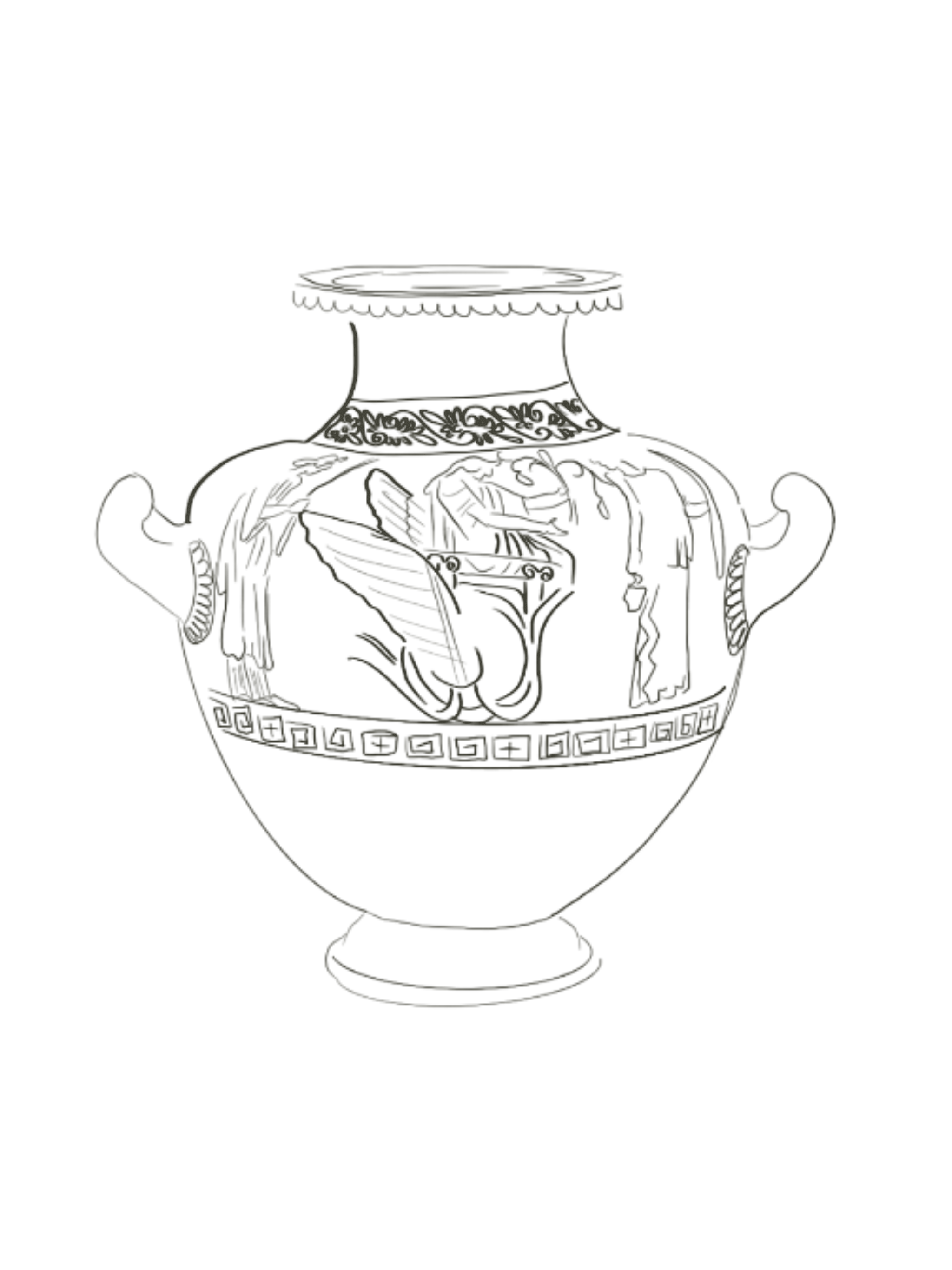
Summer
Once upon a time, the world (for the Greeks) was just summer. Every day way sunny and warm which came from the work of Demeter and Persephone. Demeter kept the natural world in balance and Persephone would paint the flowers. In this vase, mother and daughter are teaching human the ways of growing and harvesting the grains that grow on their lands.
The Met:
Terracotta Hydria: Kalpis ca. 460–450
also known as a water jug
click on the vase to view.
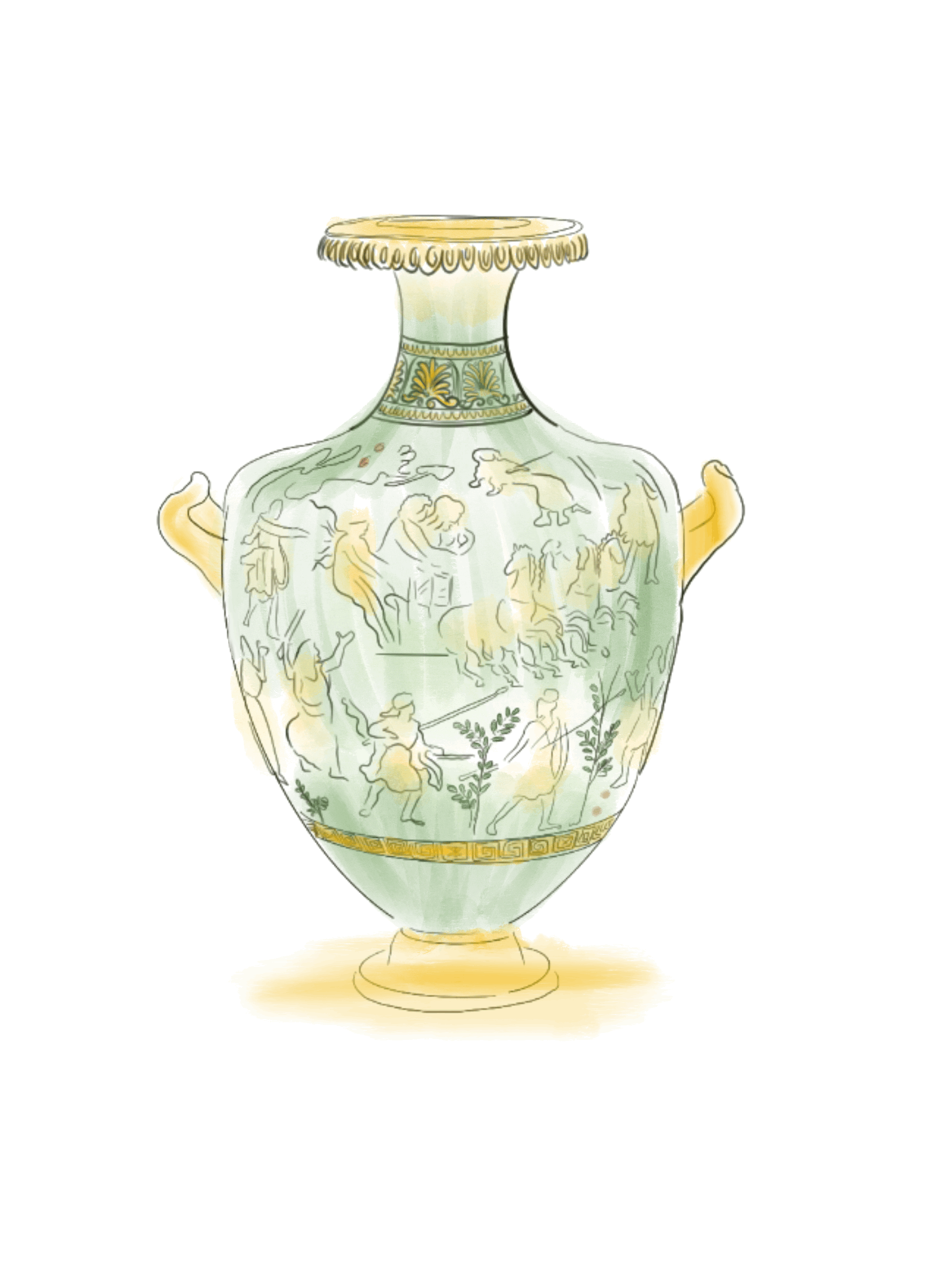
Fall
Hades, god of the underworld, who fell in love with Persephone, stole her from the earth and her mother Demeter and brought her to his domain.
Note: Against her will! (gods were jerks)
The Met:
Terracotta Hydria ca. 340–330 B.C.
click on the vase to view.
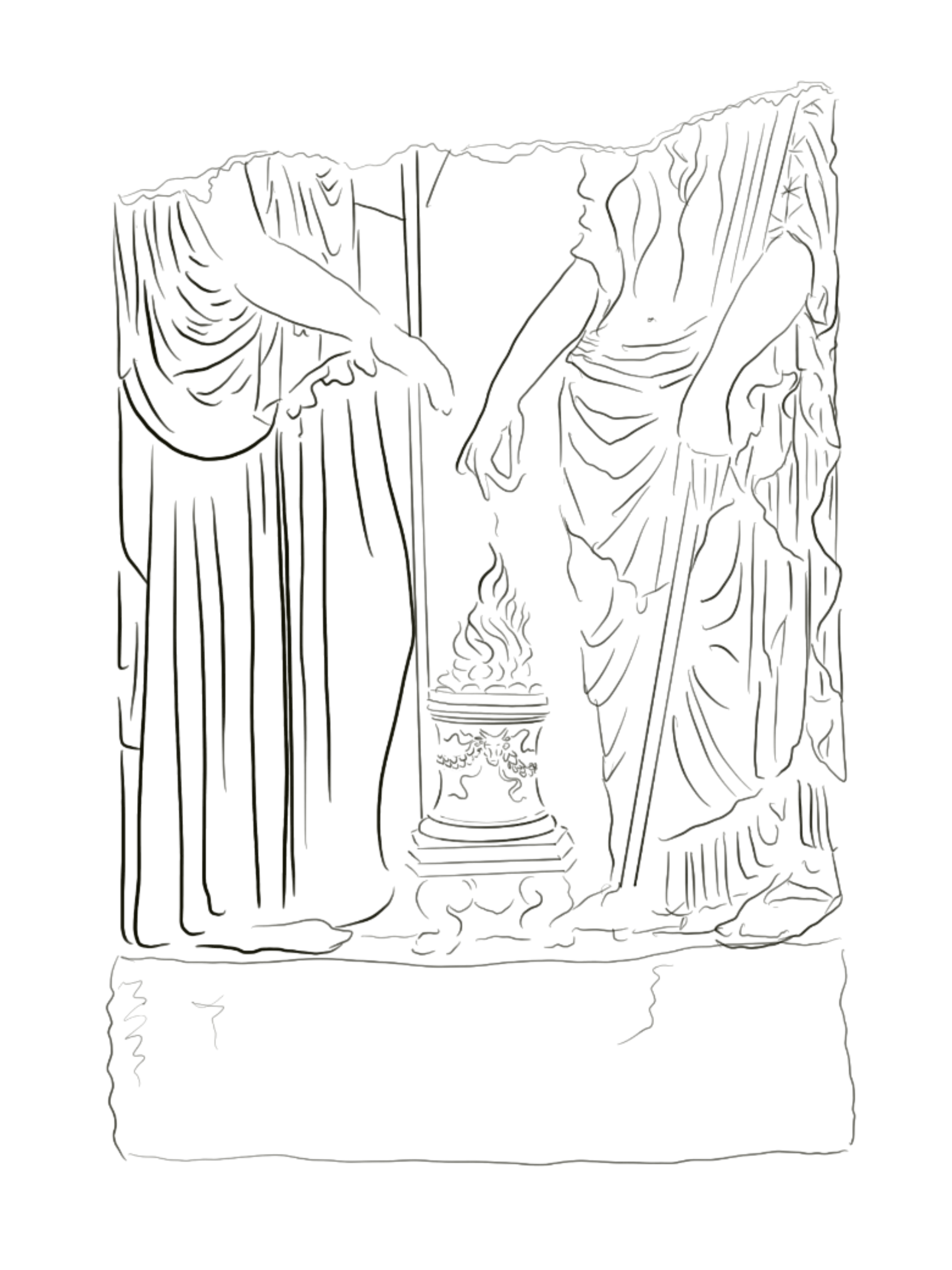
Spring
The coming of Spring is represented by Persephone being reunited with her mother Demeter. After a months of being away from her daughter, Demeter rejoices in her return and the two bring life back to the natural world. Demeter brings the leaves and Persephone, the buds for flowers.
The Met:
Relief with two Goddesses,
1st–2nd century A.D.
click on the slab to view.
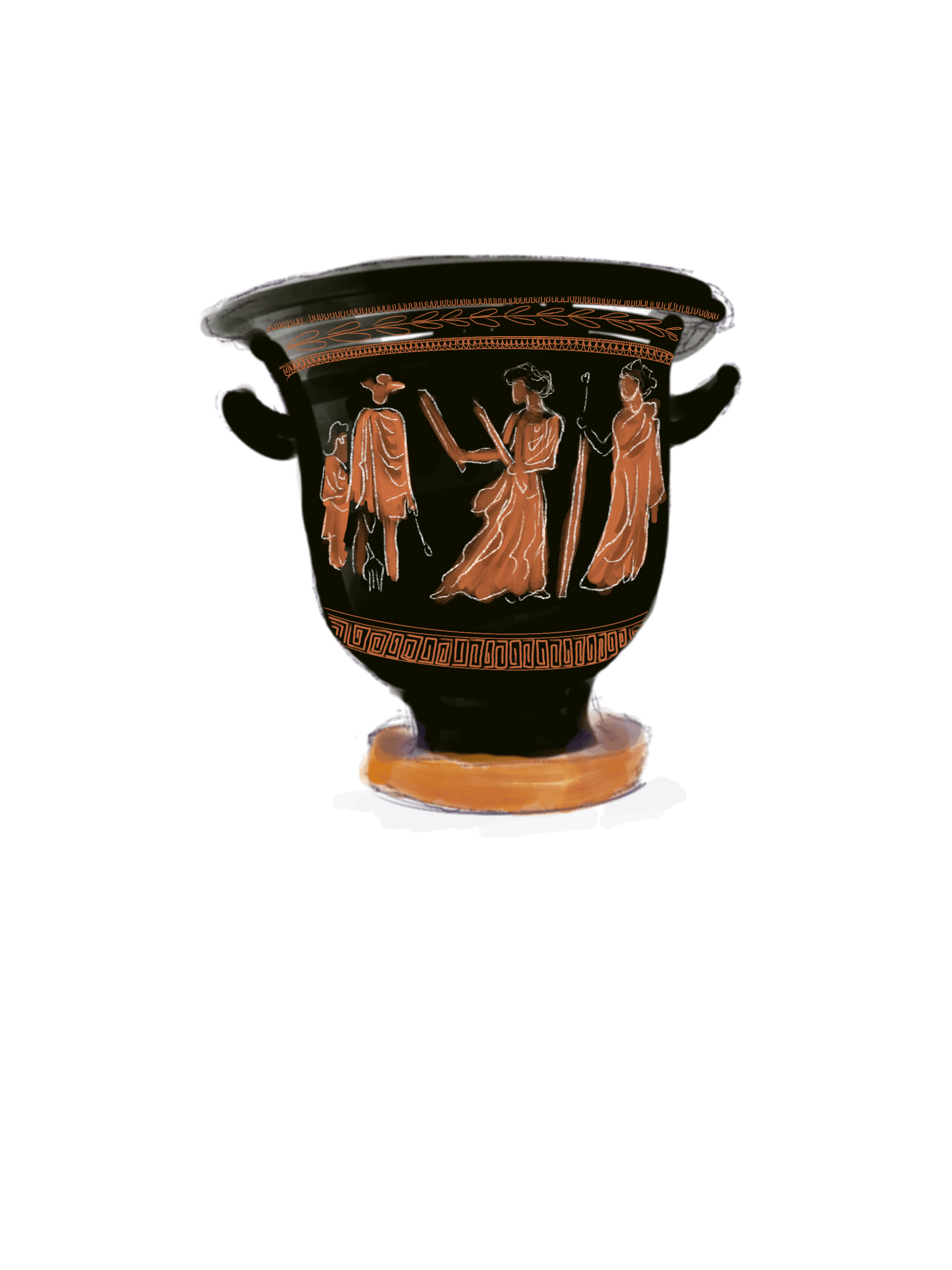
Winter
In this vase, Persephone is being guided back to the earth by Hermes to return to her mother after spending her absent time in the underworld with Hades. Persephone ascends to earth through a rocky outcrop. Demeter, waits on the far right to receive her daughter and the renewal of life that her return engendered.
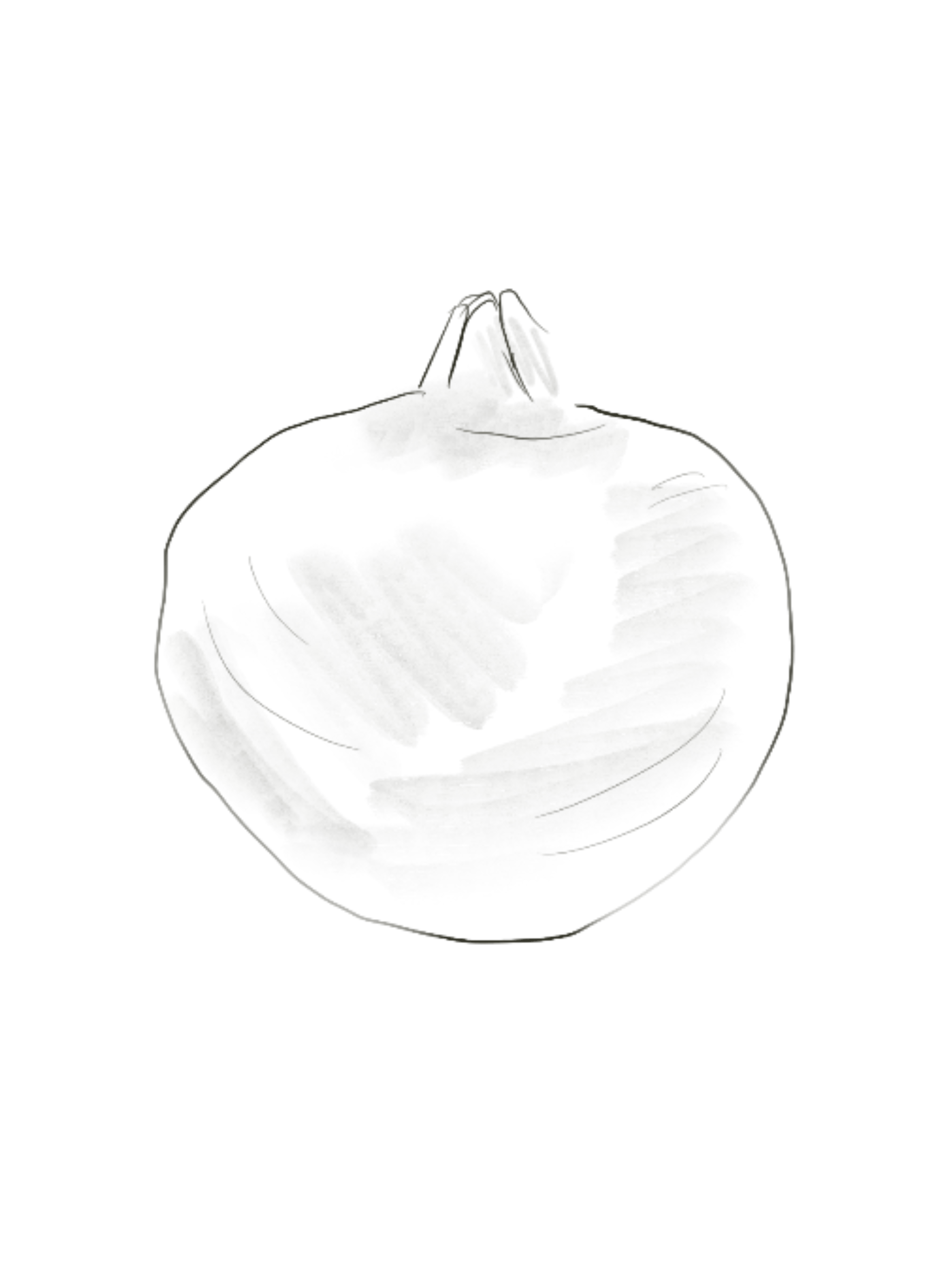
The Fruit of Our Seasons
Before she returned to her mother, the selfish and determined Hades gave Persephone six pomegranate seeds which meant she must return to the underworld. It was decided that for six months of each year, Persephone would return to the underworld with Hades, and winter would come to the world. In spring she would once again return to her mother, allowing the earth to bloom. She became the queen of the underworld, welcoming the dead, and the goddess of the natural world, welcoming the flowers.
The Met:
Terracotta Bell-Krater
ca. 440 B.C.
click on the vase to view.
The Met:
Terracotta pomegranate,5th–4th century B.C.
click pomegranate to view.
take a look at the mapping process








.jpg)